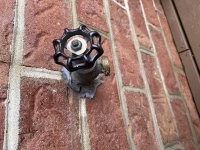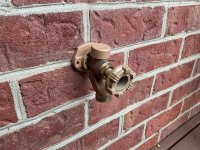VaTom
Member
I don’t consider myself a “bubba” when it comes to home repairs but botched this one. I had a back flow preventer on an outside faucet that was leaking badly. Needed to take it off and replace. They have a set screw that locks them on the faucet. Checked out you tube. Only way to get them off is to drill out set screw or cut off with dremel. Should have used the dremel method. Either way be careful not to damage the faucet (bib). I was carefully drilling out the set screw and bit went through bib. I think the dremel method using cut off wheel would have been better. Fortunately I have a plumber friend who owes me work and is coming this evening to replace the faucet.




